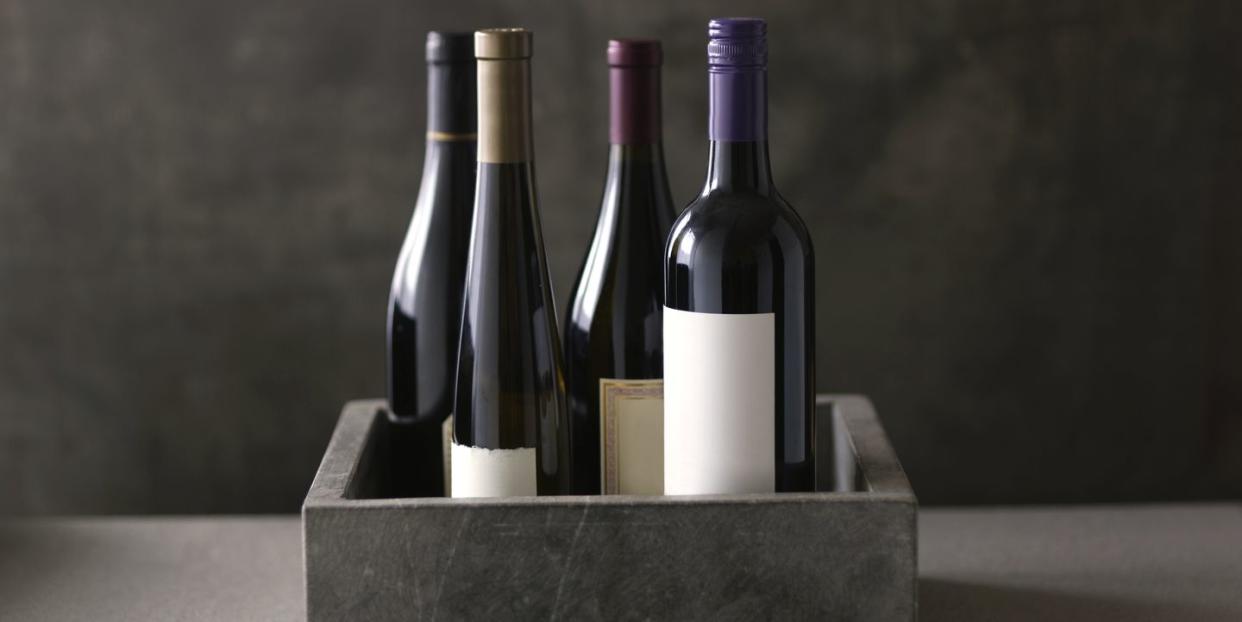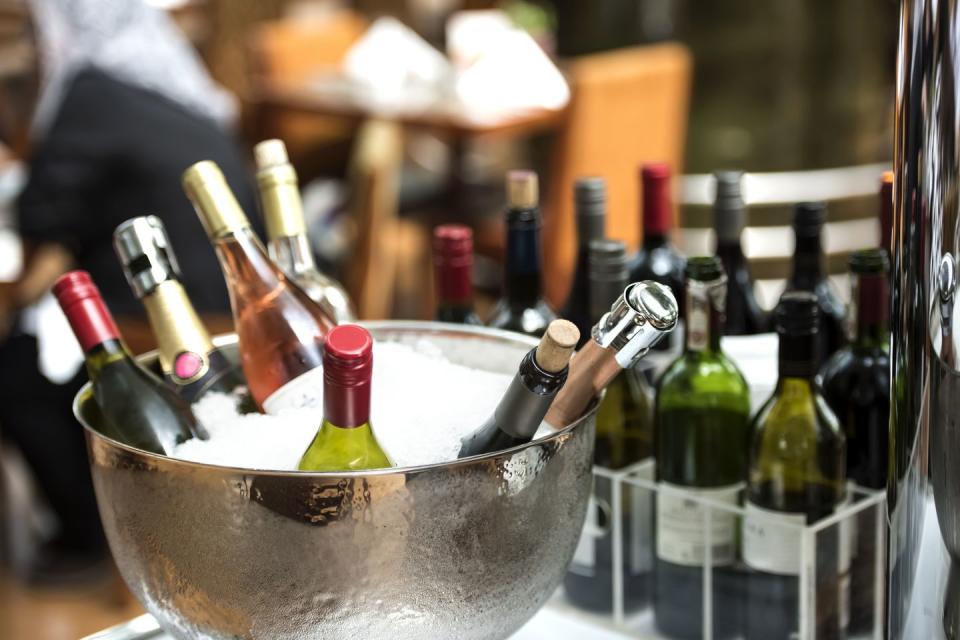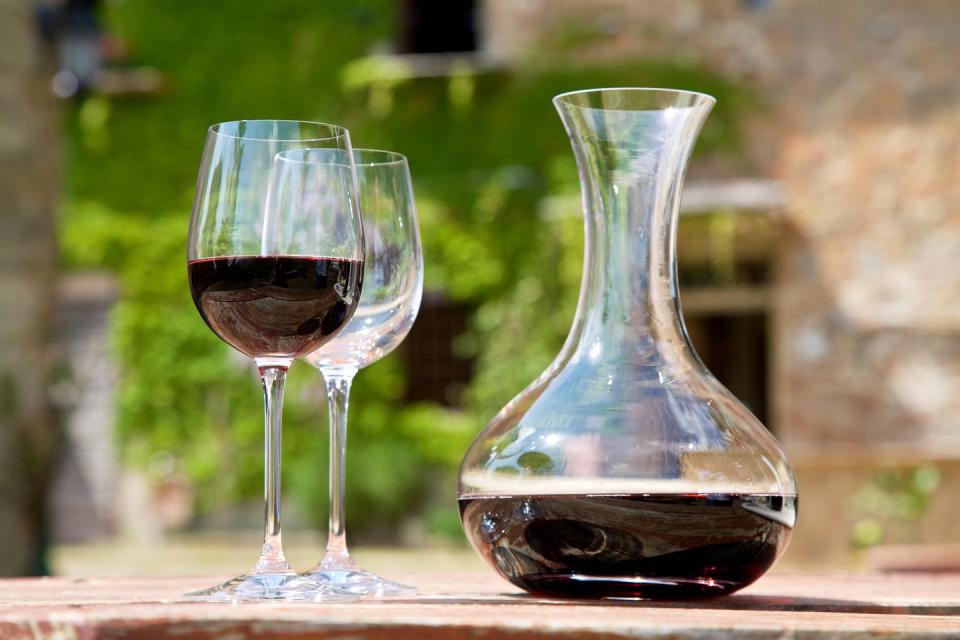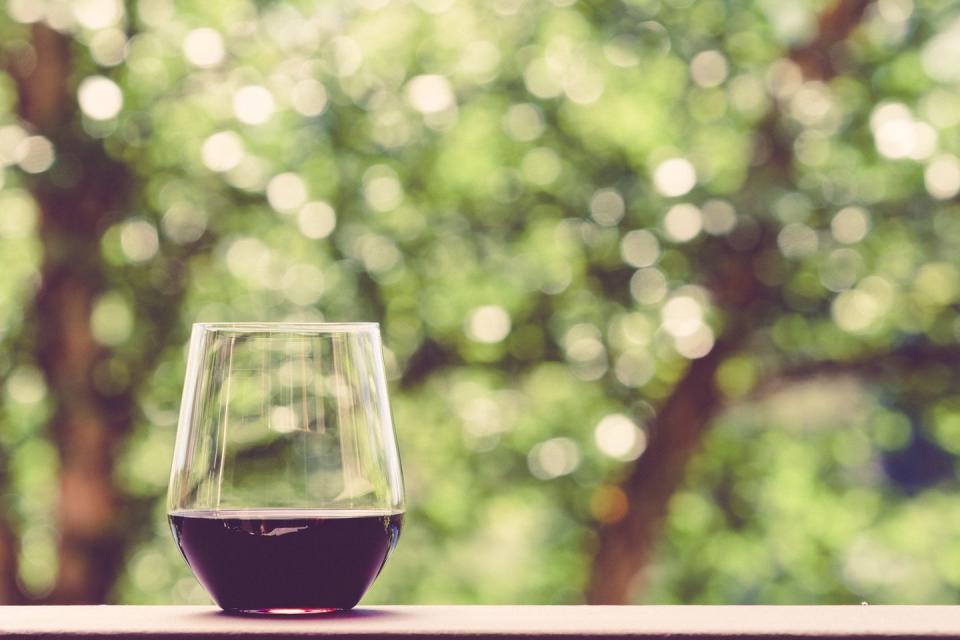8 tips for serving wine like a professional

It's all well and good finding the perfect wine, but how about serving it like a pro? We asked the experts at Wotwine, who include top restaurant sommeliers, for some advice...
Preparation is key for special bottles
If you have an older bottle of red wine that you're ready to drink, don't go for it straight away. Instead let it stand vertically for at least a couple of days to allow any fine sediment to settle at the bottom.
Then, taking care not to disturb the sediment, you should decant the wine gently over a candle (an iPhone torch can be effective too!) until you start to see cloudiness at the bottom of the neck. That should leave you with a clear, bright wine with more purity of flavour!
Try...
BUY NOW El Piadoso Rioja Gran Reserva 2008, Waitrose
BUY NOW Chateau d'Agassac Haut-Medoc Taste the Difference 2012, Sainsbury's
Get the temperature right

There’s a tendency to serve white and sparkling wine straight from the fridge, which is really too cold. The ideal range for all but the lightest, cheapest whites is 10-12ºC so let it stand for a few minutes.
Everyone knows that reds are best served at “room temperature” but that maxim originates from before the time of central heating when houses were a lot colder. In truth, you should be aiming for around 18ºC for reds, other than a light summer Beaujolais … but that’s unlikely to be on your Christmas table.
If you've forgotten, quickly chill the wine
Have you ever been faced with a warm bottle of white you've forgotten to stick in the fridge? We've all been there!
The experts recommend wrapping it in a wet tea towel and sticking it in the freezer for 10-15 minutes. The water conducts temperature far more quickly than air, which is why ice buckets filled with water are so effective.
Know when to decant red wines

Letting a wine "breathe" is a well-known technique for reds, particularly young highly-structured wines made from the likes of Nebbiolo, Sangiovese and Carignan, as well as some Cabernet-based wines, where the tannins can be a little aggressive in their early years.
Just removing the cork from the bottle will make next to no difference on these wines, as you simply don’t get enough oxygen to the liquid, so you really do need to decant them for at least an hour.
Older wines can be delicate so be careful about decanting for too long. Try the wine and you can always pour it gently back into the bottle if it’s ready. That’s known as double-decanting and is a useful technique if you’re taking a bottle to a dinner party where there won’t necessarily be enough time to decant it properly once you arrive.
Try...
BUY NOW Sainsbury’s Taste the Difference Barbaresco 2014, Sainsbury's
And white wines, too
Perhaps less well-known is that it can be a good idea to decant white wines. Screwcaps have been great for preserving freshness but the downside is you can get what is called “reduction” in the bottle.
This can lead to a smokey, sulphurous aroma, often referred to as “struck match” when the wine is first poured, obscuring the fruit. Some vigorous swilling in the glass usually sorts it out but it is better to decant the wine for half an hour.
Try...
BUY NOW Te Rakau Hawkes Bay Chardonnay 2017, Aldi
BUY NOW Petit Chablis Moillard Les Grappes d’Or 2017, Tesco
Never serve Champagne in flutes

Don’t serve champagne in flutes, ever! Top producers like Krug and Dom Pérignon – and they really should know – always use white wine glasses, ideally ones which curve in a little at the top. A flute is too narrow to allow the air to react with the wine and release the flavours so, particularly if you’ve splashed out on a really good bottle (and not over-chilled it!) try it this Christmas. You’ll never go back to flutes, we promise.
Try...
BUY NOW Waitrose Vintage Champagne 2007, Waitrose
BUY NOW Delacourt Vintage Champagne 2004, M&S
Don’t overfill the glass
It varies by glass size and shape but, in general, you should pour about a quarter to a third of the way up. That again allows the air to get to the wine, particularly if you swill it gently, encouraging the release of aromas but it also means that the wines aren’t warming up too much sitting in the glass.
Avoid stemless glasses

They’re great for reducing breakages at parties, as the join between the stem and bowl is the most fragile point, but holding the glass rapidly warms the wine. If you do have to use them, re-fill sparingly … and often.
('You Might Also Like',)


